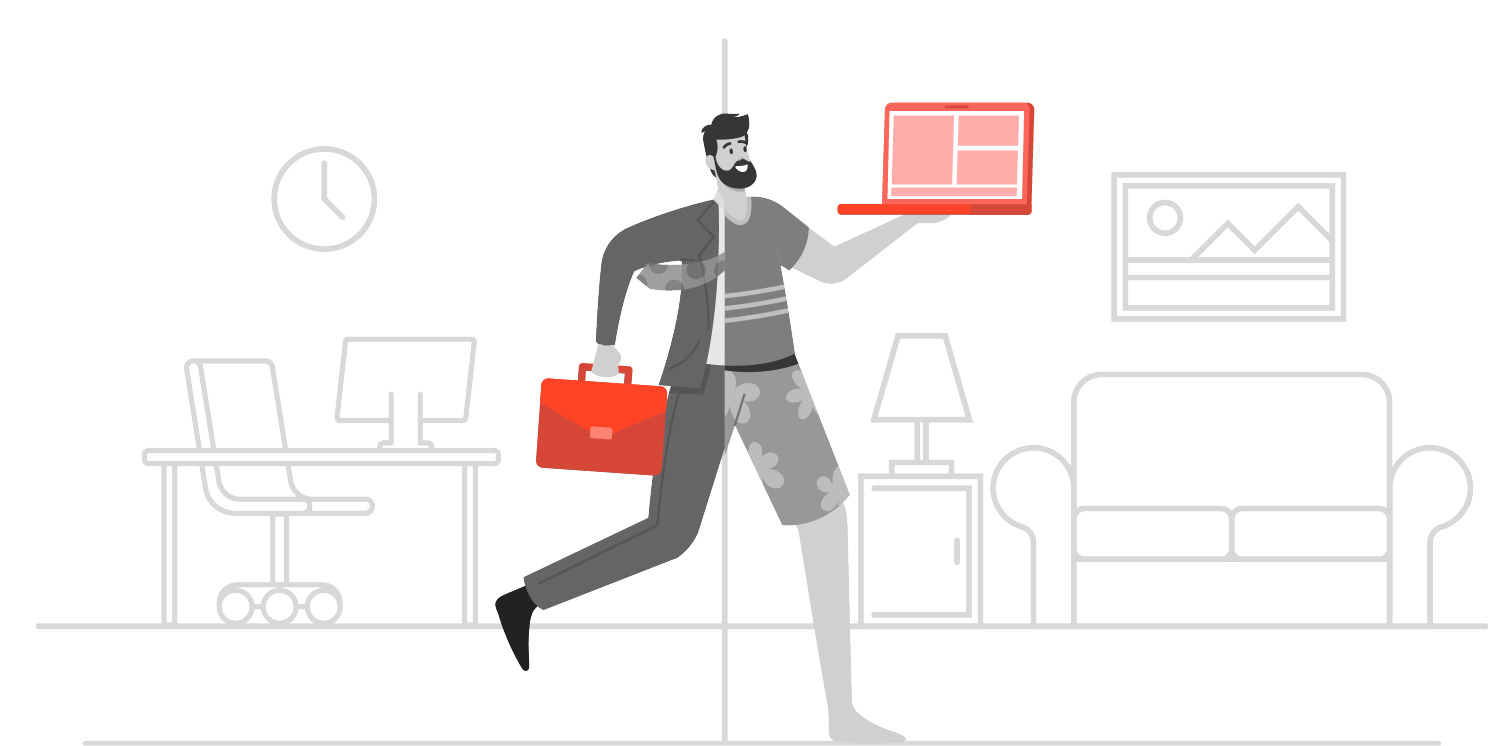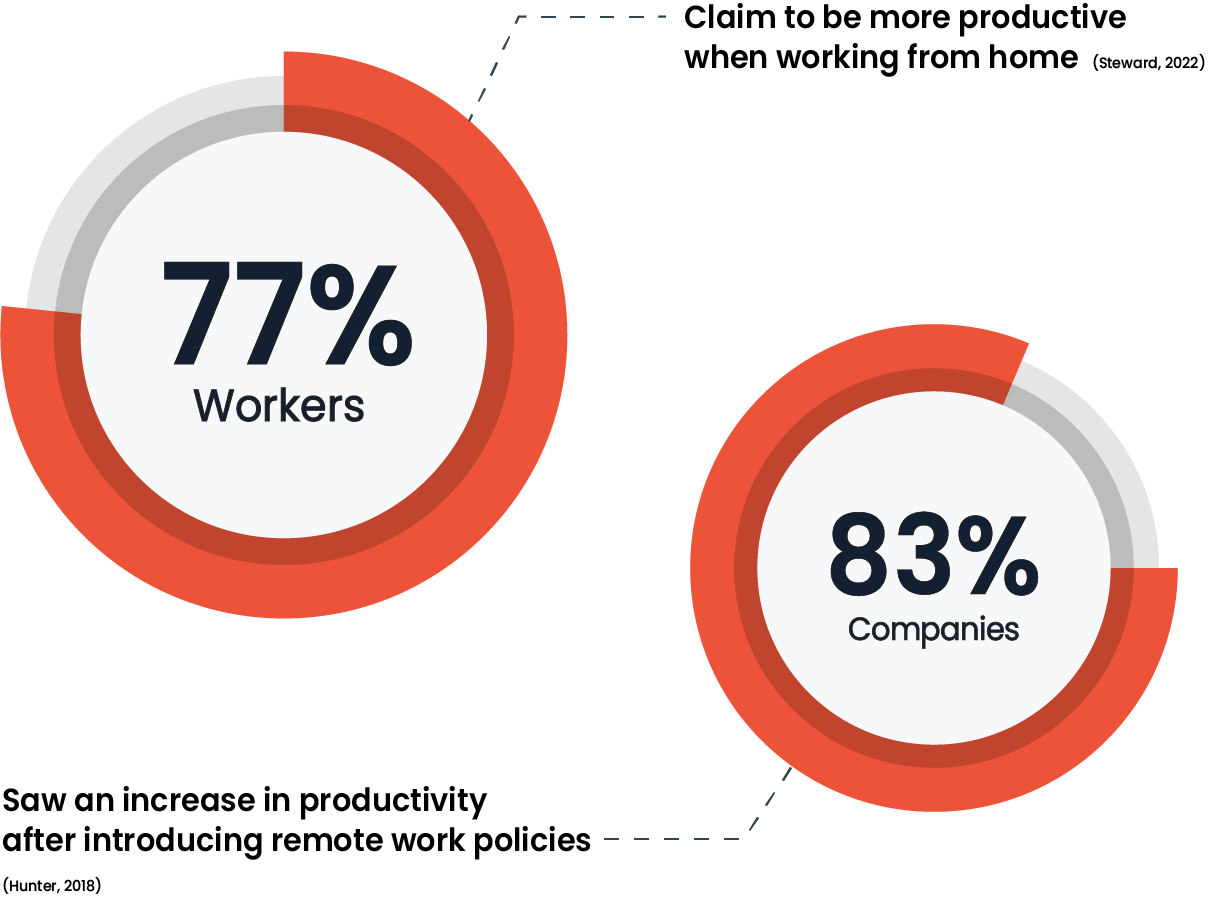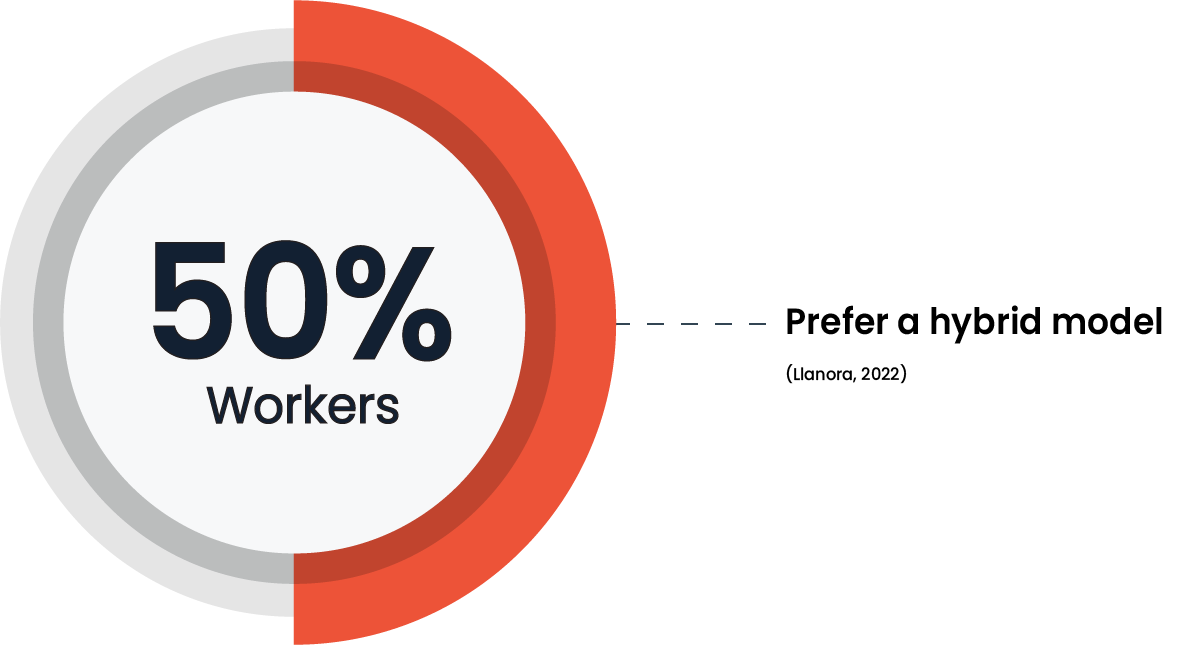The Shape of the Workplace in a Post-Covid World

We live in the waning days of a global pandemic. The existence of Covid-19 forced much of society to warp around it, and with it gone, we now must determine the shape of “back to normal”. In some cases, it’s a simple task of recreating what came before, but for employers, they face a special challenge. The working world experienced a surge in work-from-home (WFH), and found the move to be a great success, Covid or not.
WFH is a special kind of working, that does some things extremely well, and others poorly. The concept of a work-life balance has been given a greater cultural emphasis, making those factors more relevant, even to non-WFH positions. So if you’re looking to create a business structure, how can you chart a path forward? Which route is best for you and your workers? This article places a strong focus on the data, seeking to evaluate various methods of work, all to help you make that final call.
For the sake of simplicity, this article will mainly be comparing a traditional office setup with a WFH direction. There are variants to each mode, of course, but these two offer the highest contrast between each other. Work-from-anywhere, though it can operate on a global scale, has a lot of overlap with existing WFH frameworks. Likewise, coworking spaces are similar to the traditional office structure in that they bring all employees to a centralized, curated location – but there, employers have less control over the space. A difference to be sure, but not enough to make it disanalogous from an office.
Comparing Work-From-Home to Traditional Offices
When looking into discussions about WFH, you’ll find the concept of “work-life balance” everywhere you turn. In the pre-Covid era, when people were encountering WFH for the first time, it was often touted as a way for people to set their own schedule and balance things in a way that best suited them. In practice, this concept proved more difficult to achieve than expected. Much of this difficulty was actually definitional – this idea of “work-life balance” is actually quite nebulous, which makes achieving it a difficult task (Felstead et al, 2002).
Generally, WFH’s problems are things that a traditional workplace structure excels at. Where employees may feel aimless when working from home, unable to truly separate their work life from their home life, other kinds of employees may enjoy the defined severance created by a traditional workplace.
Offices are more than just a space for people to get work done and leave. The collecting of each worker in one place allows for a collaborative environment, letting employees organically intermingle, offering a helping hand when needed. They can offer support, education, advice on projects, or simply allow for socialization and career networking. Letting an employee watch another do a job well is an excellent, efficient way of training new hires. The very act of making employees accessible to other employees is not to be underestimated.

But there is another side to the coin, this time in favor of WFH, and it’s an all-important factor for any workplace looking to see positive results: productivity. The ability to craft one’s own schedule, down to the finest detail, allows for a more flexible model – one that could, in theory, lead to employees optimizing a workflow model that fits their needs specifically. 77% of workers claim to be more productive when working from home (Steward, 2022), but is that true? Of companies that introduced remote work policies, 83% saw an increase in productivity (Hunter, 2018). Not a universal success by any means, but certainly worth taking notice.
It is also worth noting that the productive effects of WFH have some caveats. For instance, productivity levels do tend to drop in some situations, relative to your average WFH employee. Perhaps the most obvious factor is in living with children, as parental needs tend to carry a strong influence over the parent’s life (Toscano et al, 2021).
On your employee’s end, the added control can offer numerous quality-of-life benefits. It erases the commute, lets parents keep a closer eye on their kids, and if an unexpected window of opportunity appears to get work done, nothing is stopping them from taking it.
Keeping employees in their own homes is also less expensive than the need to maintain a constant office space, and you won’t have to worry about your entire workforce catching the common cold all at once.
Of course, hybrid models like coworking spaces can offer a mix of both upsides while potentially negating some of these downsides. If this is the direction you lean, then the question moves away from “which option do I want” and towards “which should I emphasize?” If employees are sometimes working from home and other times from an office, how often is “sometimes”? Whether you aim to keep one foot in each model or embrace a side with open arms, you’ll have a choice to make.
Making Tough Decisions
So, with the options set in place, how can we begin evaluating each direction? Which one best fits the business you aim to operate?
In short, WFH offers dispersed freedom, at the cost of centralized structure. Traditional offices are the inverse, centralizing their structure at the cost of dispersed freedom. You will have to decide which end of this scale has the most synergy with your business model. Perhaps you value a dispersed employee group, operating from different parts of a state or nation, to give them a wider degree of perspectives and life experiences? Or maybe you value the interpersonal connections between employees, and the idea of solo jobs isn’t one you encounter all too often? The factors at play are simply too numerous to list here.
But that is only a functional perspective on these models. Employers will face different realities and responsibilities in each situation, so another question to ask is “which option can my business most easily support?”
When it comes to the operation of a traditional workplace structure, it does come with an added ‘catch’. If you want a dedicated space for employees to work, then someone has to manage and design that space. This is not a simple task – every detail, right down to the temperature of the room itself (Lan et al, 2009), will have an impact on worker productivity.
In allowing WFH, you will offer employees the chance to personalize their own schedule, but it’s a schedule you may need to plan around. Several studies recommend a degree of employer planning when it comes to WFH, as different employees will have different needs in different situations. While some workers will use that control to be more productive, some may be hindered from doing so (such as in the previous “living with children” example). In WFH, employees will typically collaborate indirectly, so if projects call for a more direct involvement between workers, you might face issues.
There is still one final perspective worth considering here, though. What do employees prefer? Will either one have a stronger effect on employee well-being?
You’ve no doubt come across someone who’s said “I could never handle that”, or something similar, in regards to WFH. It’s not an uncommon sentiment, by any stretch of the imagination. You’ve likely never heard the reverse, that some people are just totally incompatible with office life. Some will begrudgingly accept the “daily grind”, but few reject it outright. There’s a reason why it’s been a staple of workforces for so much of human history: because people, in general, will do it.
Granted, it’s obvious that for some people, they greatly prefer WFH to any traditional structure. That’s why WFH was able to maintain relevance past the pandemic – because people realized how much they love it. But there is a difference between a preference and a requirement – and from what it seems, few people have a requirement for WFH, but some will require a separated working space.

One final piece of evidence can perhaps solve this puzzle. According to a study (Llanora, 2022), 49% of workers actually preferred a hybrid model. Usually, this means some days at the office and others left open, but it can also involve having a persistently-available working space that’s optionally accessible to those who need it, and used on occasion. This demographic isn’t quite a majority, but it’s larger than the other groups who prefer one model over the other – both hovering around 25% of surveyed workers.
The Best Post-Covid Option for Your Workplace

There is no one-size-fits-all solution to workplace woes. In deciding whether to take a traditional or WFH approach, you’ll use factors like a business model’s compatibility, the opinions of your workforce, and the business’ capacity to enable either model, all to guide your thinking. Examine whether your business aligns better in a centralized structure or in dispersed freedom. Or if it’s a combination of the two, determine the degree to which your business leans in either direction. This will offer valuable insight through which you can frame each decision factor.
One possible solution can involve leaning on another person’s expertise. If you don’t have the time or resources to set up a maximally efficient workplace, you can find someone that does. Co-working spaces, for example, offer that dedicated working environment without being anchored to any one business. Other options include renting a space for dedicated project meetings, if you don’t anticipate a need for persistent working locations.
As mentioned in the intro, there are several other business models that aren’t strictly WFH or traditional offices. If your workforce doesn’t want to ditch a given benefit of either model, the ever-intriguing hybrid models might do the trick. Some businesses have managed to retain the flexibility of WFH, while offering employees a professional center of operations. Once you’ve mapped out your business’ needs and priorities, you’ll be that much closer to finding a workplace model that best suits everyone involved.
Book a Meeting Room in Toronto
If your business works best with a separated work/home space, but doesn’t need it to be a permanent fixture, The Professional Centre has plenty of options to fill your exact niche.
Pick up all the benefits of a centralized workplace, without any of the firm anchors keeping your business model rooted in a single method. Whether you need to service a large team or a small meeting, The Professional Centre can supply the exact kind of space you need to enhance your team’s productivity.




